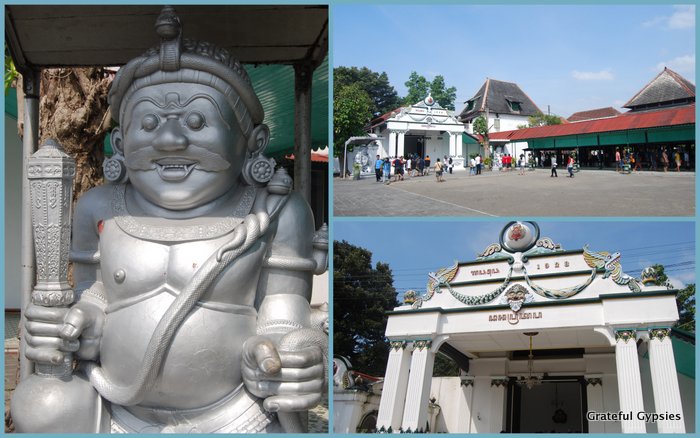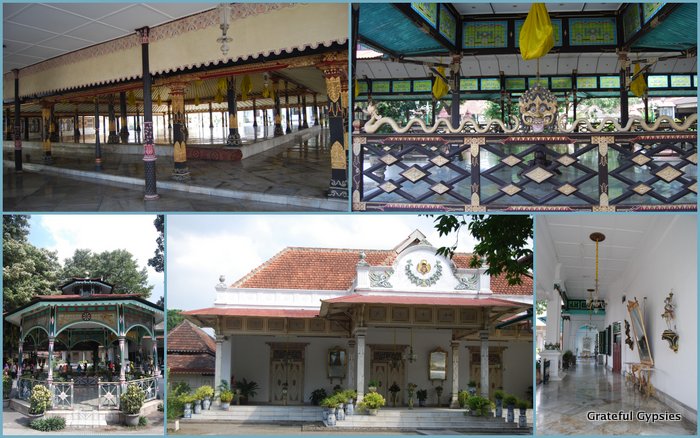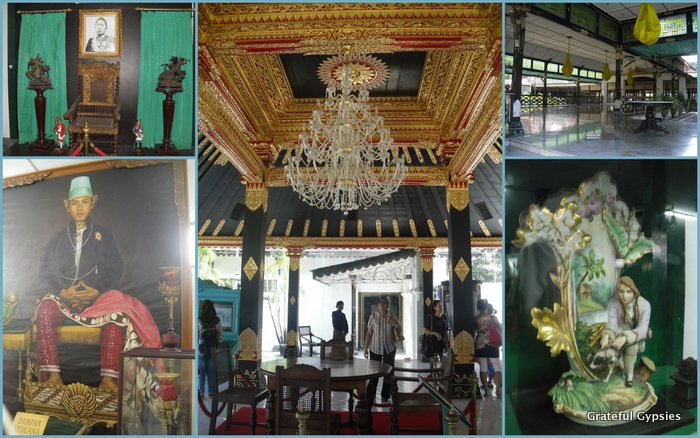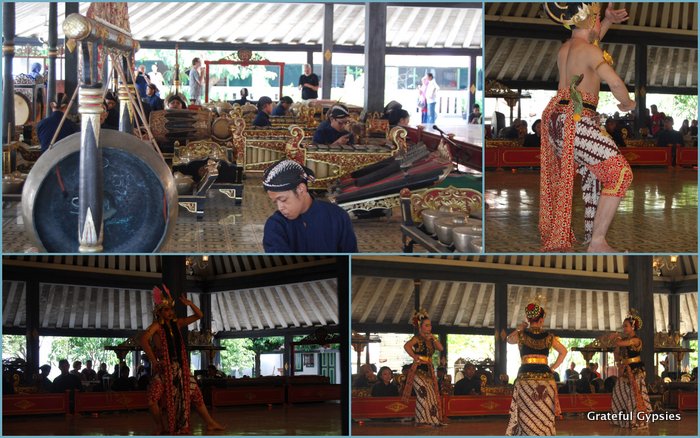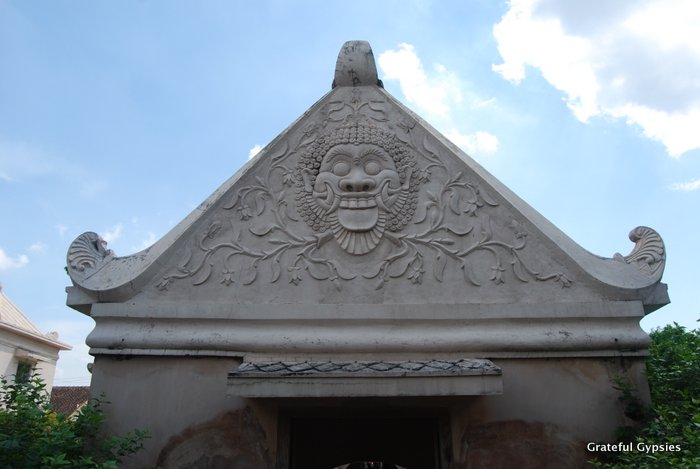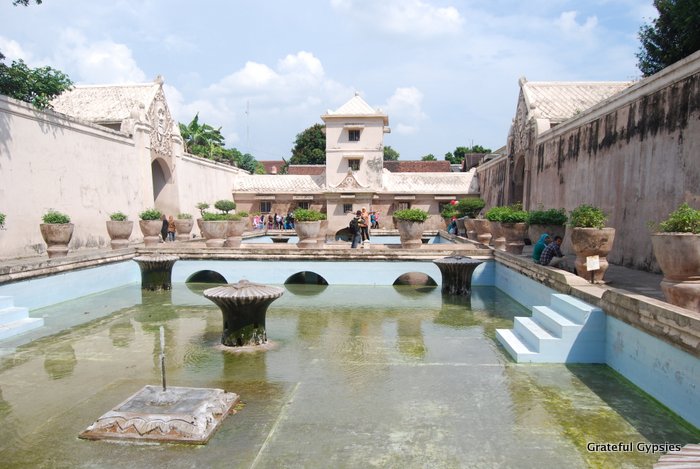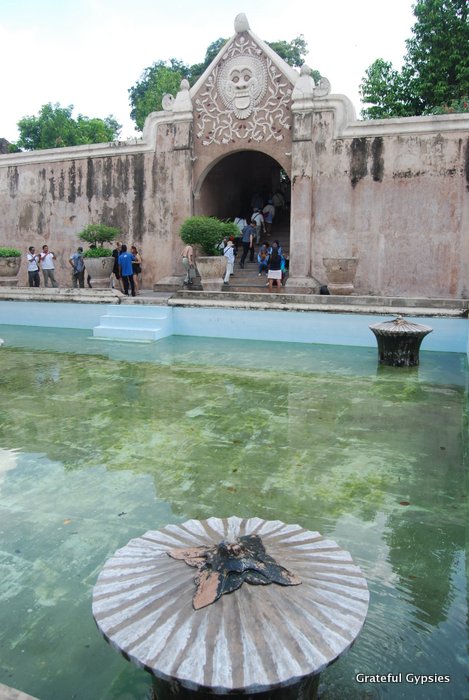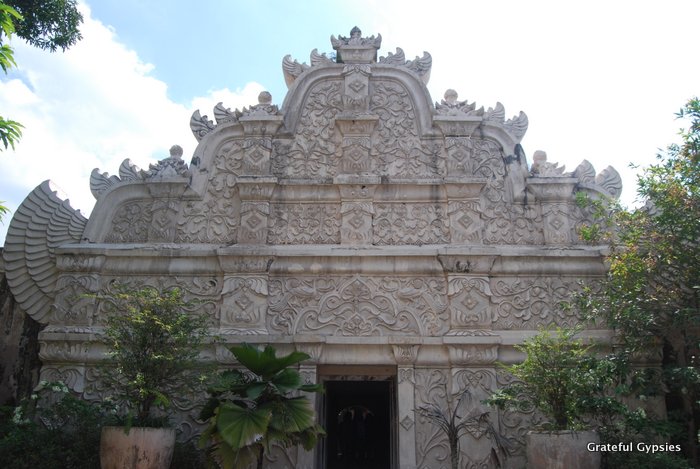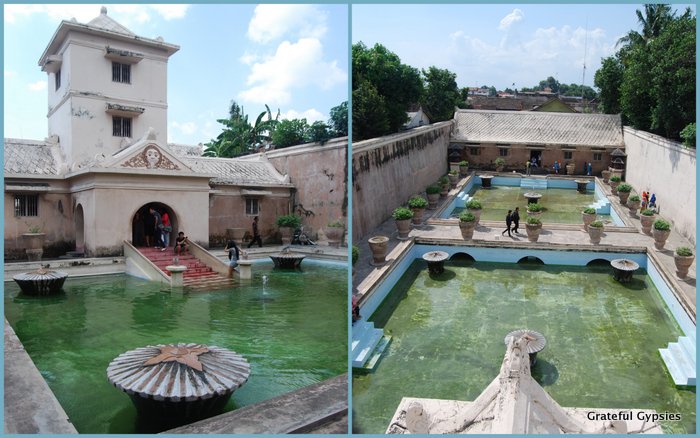The Kraton and Water Castle of Jogja Posted by sasha on Jan 20, 2015 in Uncategorized
Two of the most popular tourist attractions in Jogja are the Kraton and Taman Sari, also known as the “Water Castle.” Let’s take a closer look at these two historical Javanese sights.
Kraton
Completed in 1790, this grand palace complex still houses the Sultan of Yogyakarta and is used for important ceremonies. Since Indonesian independence in 1945, the Sultan holds the title in name and not power. He is, however, automatically the governor of the region. The people admire and respect the Sultan very much, as he is considered the cultural head of the region. In its entirety, the Kraton is basically a huge walled city, with 25,000 or so residents, markets, schools, and everything else one could need. Around 1,000 of these people work as active palace guards, an honorable job that is passed down through generations.
The Kraton was carefully designed to reflect the Javanese cosmos – it faces north to Mt. Merapi and south to the Indian Ocean, home to an important sea spirit and mystical consort of the Sultan. Every last detail of the palace has a spiritual connection, down to the placement of trees. Reflecting the history of Java, you can find Hindu, Buddhist, and Islamic elements in the decoration of the interior. As a result, the Kraton of Jogja is one of the best examples of traditional Javanese palace architecture in existence.
Although the palace is still actively used, it’s open to visitors daily from 8am-2pm, although it closes an hour early on Friday. As it’s the most popular tourist attraction in the city, you can expect a bit of a crowd. It’s also not surprisingly a hot spot for field trips, so you’ll see huge groups of schoolchildren decked out in their uniforms enjoying a day out of the classroom. While some of the areas are blocked off, there are quite a few rooms that visitors can walk through. Some feature a variety of artifacts and information on display, making the Kraton a living museum.
Music is a vital part of life in the Kraton, and you’ll see a few sets of instruments for a traditional gamelan orchestra. It’s not uncommon to see a group in action, serving as the background music for others who are practicing traditional dance. Every day from 10-noon, you can take in a performance at the inner pavilion, from dance, to puppetry, to Javanese singing.
For a closer look, take a short video tour of the Kraton with us:
Water Castle
Although it is technically located inside of the Kraton, Taman Sari is a separate attraction requiring another entrance ticket. Built in 1758 by Sultan Hamengkubuwono I as a pleasure garden and rest house for the royal family, this is where Javanese royalty came to kick back and relax. In Javanese, taman means “garden” or “park,” while sari means “beautiful” – the Beautiful Garden. The English nickname of Water Castle actually comes from the Dutch.
In its heyday, the complex had around sixty buildings – a mosque, meditation chambers, pools, gardens, pavilions, and even artificial lakes. Over time, much of the complex was damaged due to neglect, war, and an earthquake. Restoration efforts began in the 1970s, and so far only the bathing complex has been completely fixed up.
Two impressive gates lead into the bathing complex – the west gate was once the main entrance but now tourists enter via the east. The other side of the west gate has been occupied by villagers, so it’s closed to visitors.
From a large watchtower, the sultan could look down at his pool full of concubines and choose one to join him in the private pool behind the tower. It must have been a tough life…
There are other areas of Taman Sari that you can explore, such as underground passages that were once used as an escape route for the royal family. As it can be a bit confusing navigating the rest of the complex, you’re probably better off hiring a guide to show you around.
While the massive temples of Borobudur and Prambanan are the major attractions in this part of Java, there’s plenty to do in Jogja to warrant staying a few days. Take in the sights and the local culture of the city, and then use it as a base to visit the famous temples.

Build vocabulary, practice pronunciation, and more with Transparent Language Online. Available anytime, anywhere, on any device.
About the Author: sasha
Sasha is an English teacher, writer, photographer, and videographer from the great state of Michigan. Upon graduating from Michigan State University, he moved to China and spent 5+ years living, working, studying, and traveling there. He also studied Indonesian Language & Culture in Bali for a year. He and his wife run the travel blog Grateful Gypsies, and they're currently trying the digital nomad lifestyle across Latin America.



